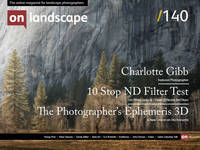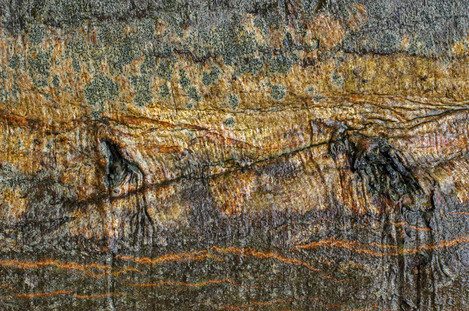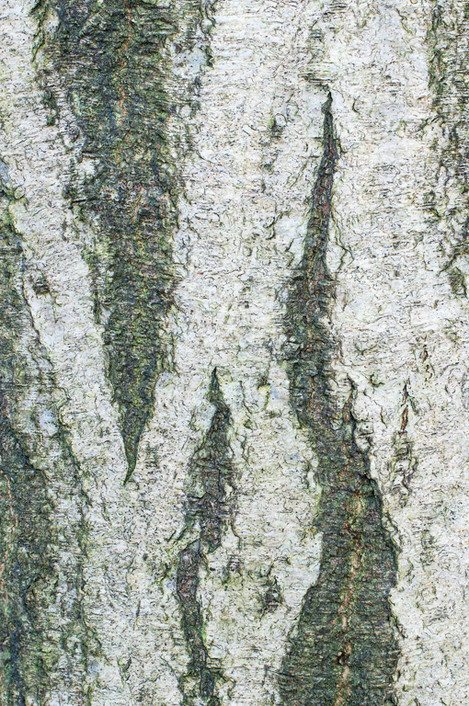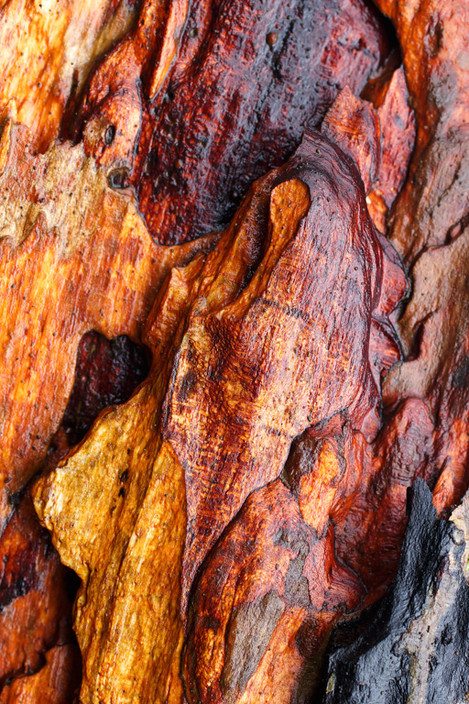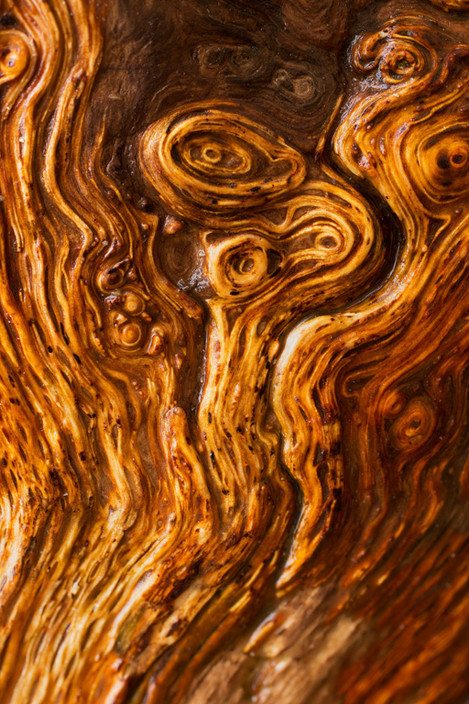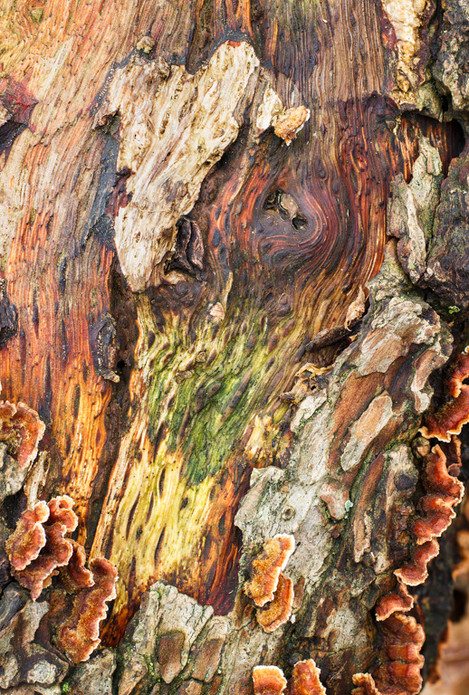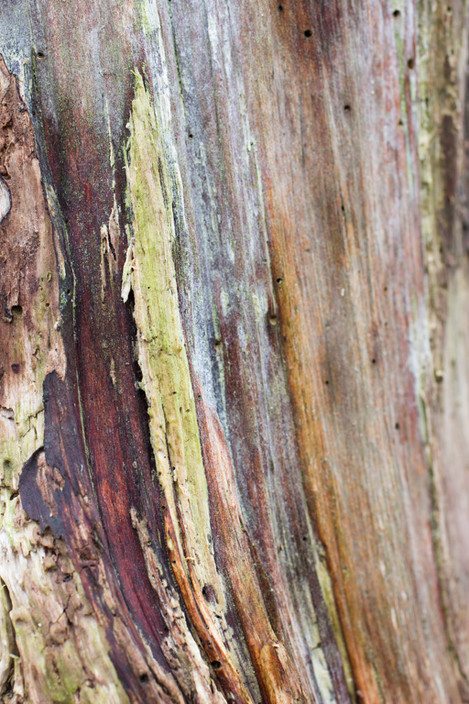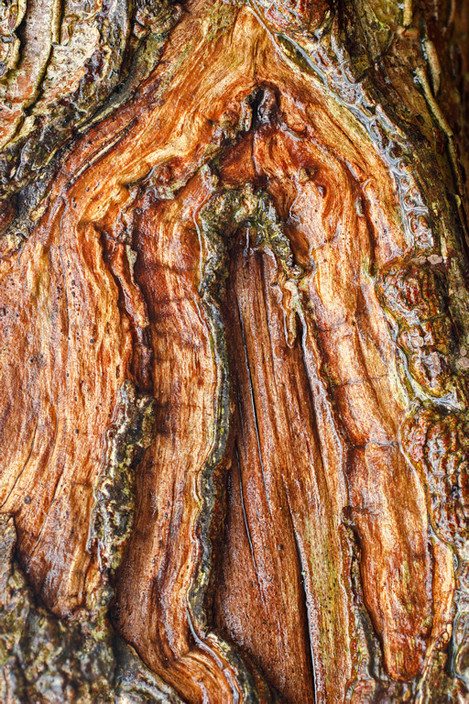Exploring miniature expressions
The way this project started was all back to front. I spent much of the summer last year cutting and sanding oak strips glued to plywood to make panels as a way of presenting my pictures. I then spent almost as much time experimenting with different papers and methods. Types of glue, sealants, waxes, varnishes, sprays, pastes... I spent a fortune and still wasn't happy, either with my pictures or the approach. One of the difficulties was finding a removable glue, such as starch paste, that did not make the dye inks run when using cotton or alpha cellulose type papers (I know pigment inks would probably be better). Resin coated papers seemed like the most practical solution, but I was still loathe to give up on more textured art papers and the pictures never seemed quite right. I decided that countryside type images worked best, but nothing seemed to tick all the boxes, so my panel project was put to one side as autumn light and the estuary took over my thoughts.
One of the things that had struck me, however, was that the pleasure of seeing a carefully sanded and waxed strip of planed oak is not dissimilar to the thrill of witnessing lovely light out in the countryside. At the time, it gave me ideas of doing close-ups of polished wood.
As autumn turned to winter my attention turned to the woods and, without making any connection to my panels, I kept being struck by the patterns on the hornbeams that I passed going into the woods. I had dabbled in this previously but one morning I was stopped in my tracks by an extraordinary mix of gold and greeny blue, accentuated by water running down the side of a gnarly old hornbeam. The effect of the wet on tree bark was a dramatic transformation of colour and texture.
The resulting picture felt to me like art. Now I know this is probably contentious. I had never felt my photography was anything more than a reaction to a striking view, light or anything of beauty, so I appreciate that calling the project 'bark art' could be seen as pretentious, but it is after all a considered attempt to produce art. Whether it is worthy of being called good art is for the viewer to decide and it is not as if I called the project 'worthy bark art'!
But, light bulb moment, I had a project for my panels (I have since considered that my internal wiring may be back to front). Bark patterns, textures and curves on top of polished natural wood seemed to be a perfect match. 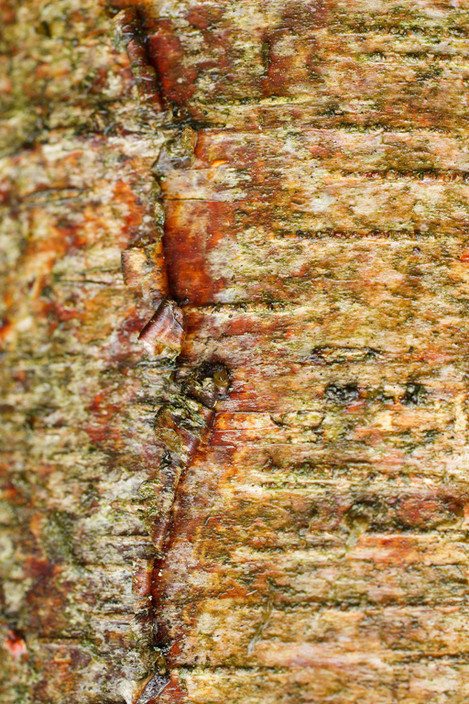
One of the many things I have learned from On Landscape is that I have nothing to offer this community in terms of technical skills. Much of what is discussed in the technical articles goes straight over my head. My only thoughts with this piece are to offer up my experiences in the hope that there may be some gain for others.
I started the project with a Canon 50mm f2.5 compact macro (offering half life-size macro magnification) on a crop sensor. This is a beautiful lens and the results are excellent. The problem I encountered, however, is that trees, fallen trunks, stumps and congested branches aren't always accommodating to being approached by a tripod. I have since invested in a 90mm 1:1 macro lens and it has opened up a whole new world with the longer reach and greater magnification (well half a new world in reality).
I had previously experimented with focus stacking and I have used it extensively for this project. I will try to use a single picture if possible, but it is so useful to be able to extend depth of field without stopping down, and affecting image quality, that it has become an essential part of the project. I have also experimented with ways of avoiding stacking, however.
I do not use a technical camera with movements (way beyond me) and we all know that the most depth of field will be achieved with a plane of focus parallel to the subject plane. This is obviously awkward with the inherent curve of trees so you are forced into making certain decisions. One of the options is trying to use the curve of the tree to your advantage and tilting your camera so that the focus plane follows the lines or curves of your image (lead-in or graphic lines). This way you end up with selective focus that follows the lines or shape of your picture.
I have to say that in my case this works more through luck than judgement, when it works, no matter how hard I try and I take my hat off to the those who work with technical cameras. It is, however, something I try and be aware of in my compositions.
As for the stacking, I have experimented with a meticulous step approach from the furthest point in the image to the closet, or vice versa, and I have tried simply selecting points within the image that I want in focus. The latter does produce interesting results but it also can produce an unnatural effect and I am quite careful about this. I would rather go back and re-visit an image than use a stack that asks awkward questions of the eye.
I was initially using a plug-in with my ancient Elements programme for the stacking, which worked beautifully for colour and sharpness on some images, but I found that when there were issues, there was no way of rectifying them. I started using Zerene Stacker, which has handled the problem images without a hitch, and once I grasped how to make the most of its capabilities (ongoing), it seems to be able to handle anything and everything. Incidentally, I have since learnt that one of the stacking algorithms in Zerene prefers to have the images in a proper order, so this may affect my approach in the future.
As for the best conditions for these pictures, the effect of rain on tree bark is nothing short of dramatic. It saturates the colours, glistens, brings out texture, creates macro size streams, gullies and eddies as the water makes it makes it way down through the tree, and draws immediate attention to the patterns and curves offered up by the seemingly infinite variety of structures.
It would, therefore, seem obvious to carry a source of water in your pack 'et voilà', you have a continuous supply of rain-soaked goodness. It is not quite as easy as that. I tend to find new compositions far more after rain than when dry and so short of spraying the whole of Woodham Walter Common with tap water, this approach is not going to help me find new images. What it does do, is allow me to re-visit images and re-create the conditions I first saw. This is especially useful if there have been problems caused by wind the first time round or I am not happy with the depth of field effect that I have created. One of the things I am learning about close-up/macro photography is that the effect of what you 'see' with the naked eye can look strikingly different when enlarged at home on the screen. All sorts of lots of little issues that seemed insignificant suddenly transform the effect of the picture, when seen large.
There is also the problem of cleaning a surface. Scrubbing at a delicate texture with a toothbrush may relieve you of all the debris that trees seem to have a fondness for, but it is just as likely to remove some of what attracted you in the first place. And using a water spray is not always the answer. The effect is not the same as when the wood has been soaked through by lengthy rain, and you have to be careful with excess water when stacking, as it can create inconsistencies as it runs off during the course of your exposures.
So the ideal conditions are still and damp. Wind is a real issue and one whose effects I have not come up with a satisfactory solution for dealing with. I find it extremely difficult to assess the shutter speed required to deal with the amount of sway that almost always seems to be present. There are so many factors to take into account. Obviously the higher up the tree the more the sway. The thickness of the tree. The fact that it is never consistent. When you look at 10x magnification in live view and there is no movement you decide you are safe to go with ISO 100 and a 2 second exposure and then suddenly there is a distinct sway out of nowhere!
I use a lower-end crop sensor camera and although the image quality is excellent at ISO 100 I don't like going above 400. This means that I will take stacks of images at, say, f5.6 ISO 400 rather than change the ISO. For those of you with full-frame cameras that produce noise-free images at ISO 4 zillion you presumably would not have to worry, but shutter speed is still an issue.
I remember reading John Shaw's advice that there is a big difference between 1/8th and 1/15th with slight movement in flowers and this seems to tally with my experiences, although I am yet to come up with any useful figures as I tend to try and play on the safe side where possible. It is the almost indecipherable sway that worries me the most as long exposures would have no problem detecting it, you would imagine. Still, lots to learn as they say. In the meantime, fallen trees and tree stumps generally offer a stable alternative when the wind is being a nuisance.
My local woods abound in oak, hornbeam and silver birch. Not that I am very good at identifying them, but there are also beech, hazel, ash, sweet chestnut, rowan, alder buckthorn and some conifers (mainly fir but including the odd Scots Pine and a few larches). I initially was drawn to the hornbeam, but the silver birch is difficult to resist even if I was a little worried that it is probably the most photographed of all trees. Still, so be it.
Silver birch offers an extraordinary variety of effects. From the vivid red of the younger trees (often mingling attractively with the green of moss/lichens etc) through to the deep burnt red that comes out when wet, through to the obvious silver and even shades of blue seem to be common. The folds of the bark are an endless source of attraction and different lighting conditions produce an infinite variety of looks.
Decaying, fallen oaks are also an absolute favourite. Where the bark falls away, you find a goldmine of lines, curls and repetitive forms that have a close-up photographer squealing in delight (well me anyway and I suppose that is quite sad on reflection). The smooth wood on these trunks also provides beautiful gradations of colour when wet. I always find it difficult to know what is the natural colour of the wood and what is produced by the different manifestations of decay, but I think it is often a mixture of the two, which provide the most interesting results.
There is one other issue that I am still unable to provide any useful commentary on. It would seem obvious to use a polariser when the bark is wet to help with glare and reflections. I often prefer the look produced without a polariser, however, although there are times when it is undoubtedly a help. There is also a problem with angles. You are usually able to reduce glare on one angle and not another and so it is not as obvious as it may seem. There is also the question of print. Where a degree of glare may look acceptable on the screen, there could be issues in print. I have rather taken to doing two versions, one with and one without, when I am not sure. Hopefully experience will cure me of this.
The upshot of all this has been enormously positive for me. My appallingly limited knowledge of the woods is growing, albeit at the speed of the trees themselves, and it has made me want to learn more. In the past I have seldom photographed the woods much in the summer as I am always rather put off by the dark canopy. I feel differently about it now. I am looking forward to exploring them in the summer. I have started to have visions of summer sunlight bursting through woodland mists. Most unlike me given the time of day that sort of thing tends to happen. I have started to photograph fungi (and even learned one or two names) and always keep an eye out now for interesting fungus on stumps and trees. This would probably never have even crossed my mind in the past. Perhaps even a project in the making.
When you look at trees close-up, it is almost disconcerting the extent to which they are not hard inanimate solids, but almost flesh-like, delicate and vulnerable. A collection of living fibres that don't look unlike the medical images of our own inner workings. I have resisted the temptation so far to hug a tree but I have certainly warmed to their benign presence, and look forward with impatience to rain and stillness so that I can wander amongst them exploring miniature expressions of their beauty.

